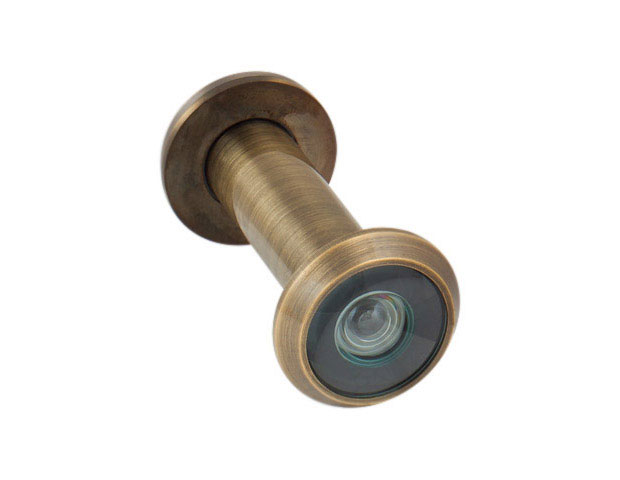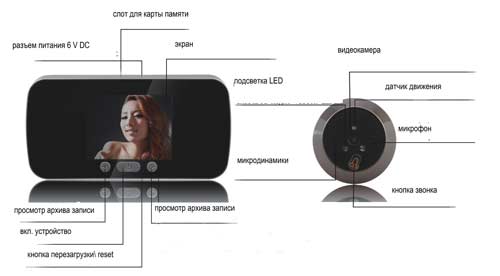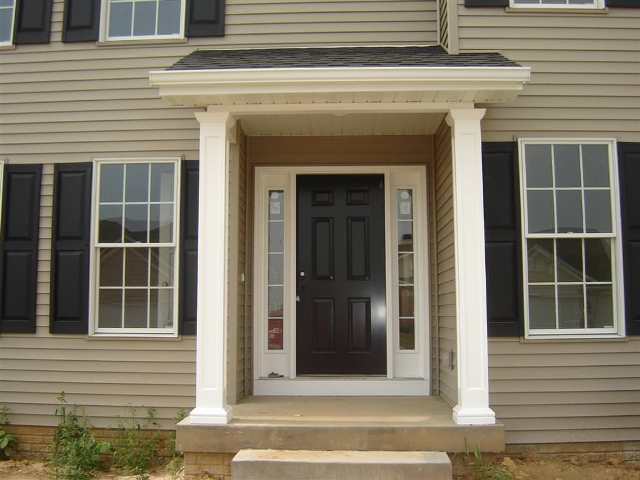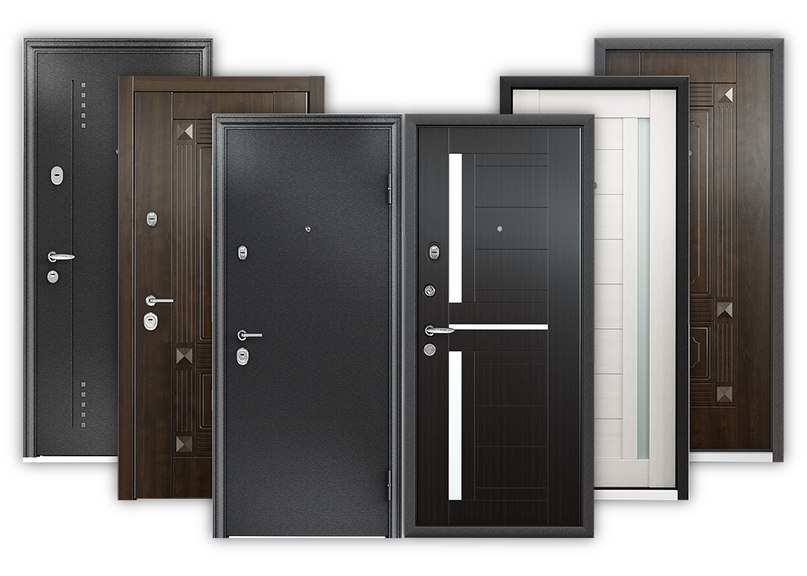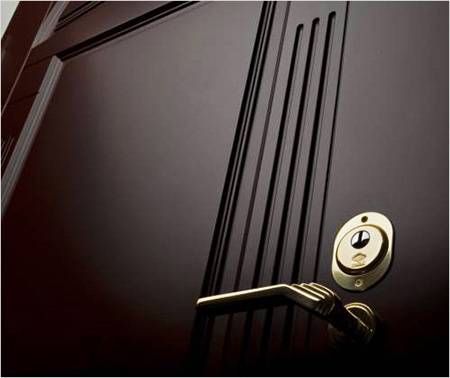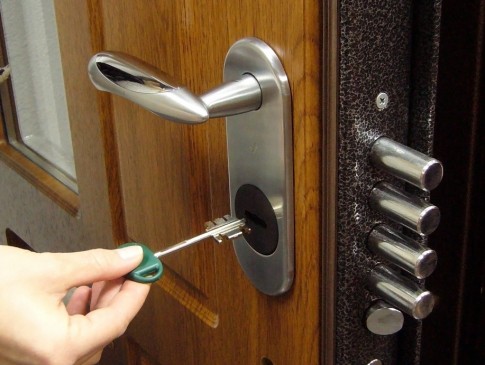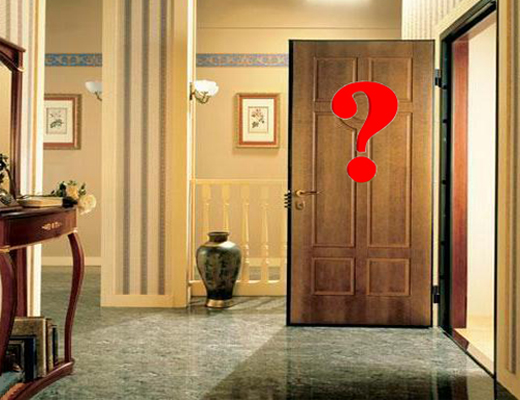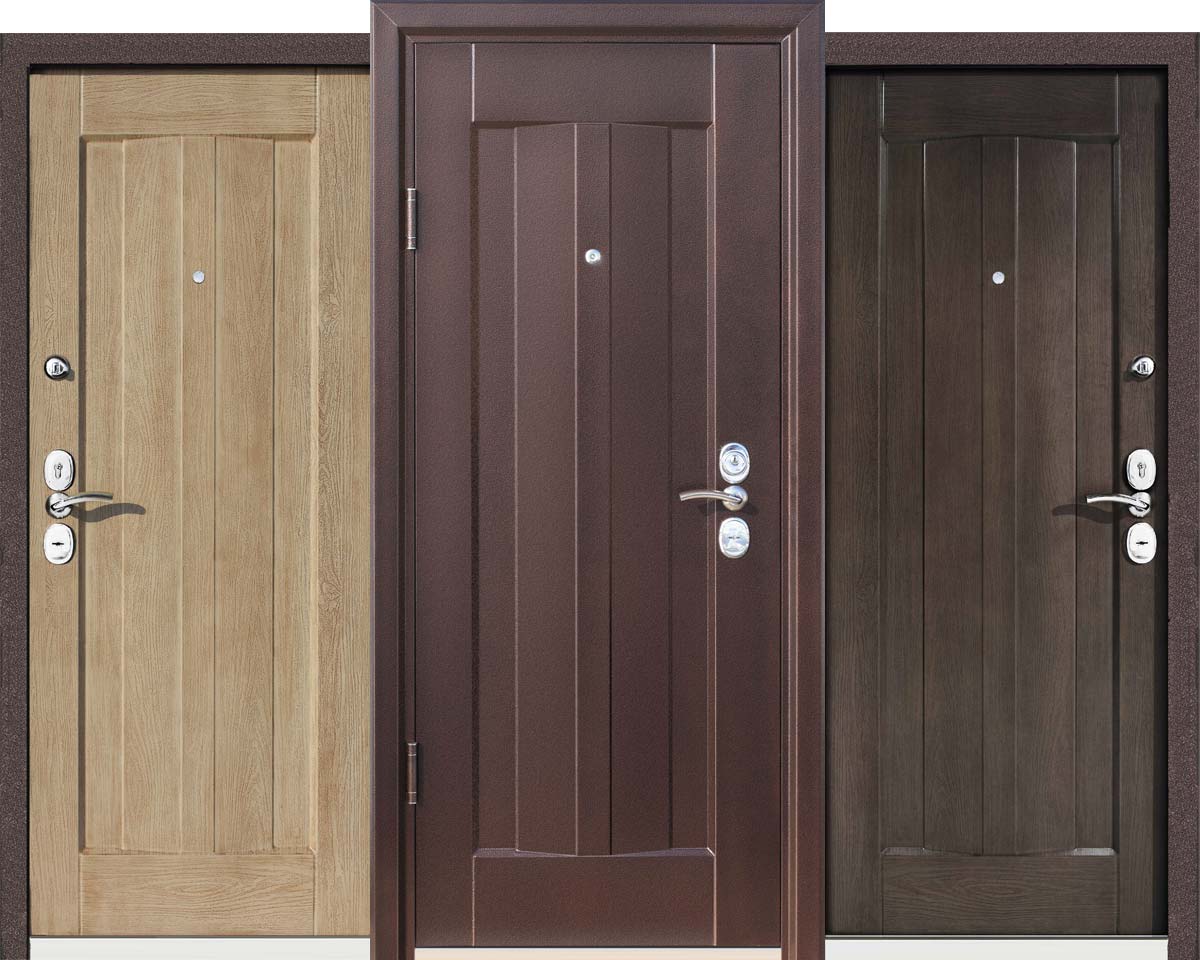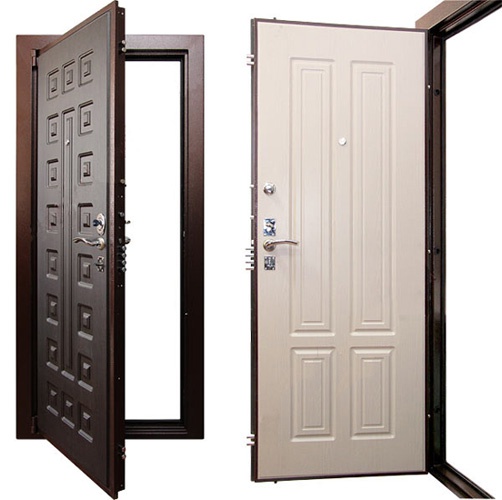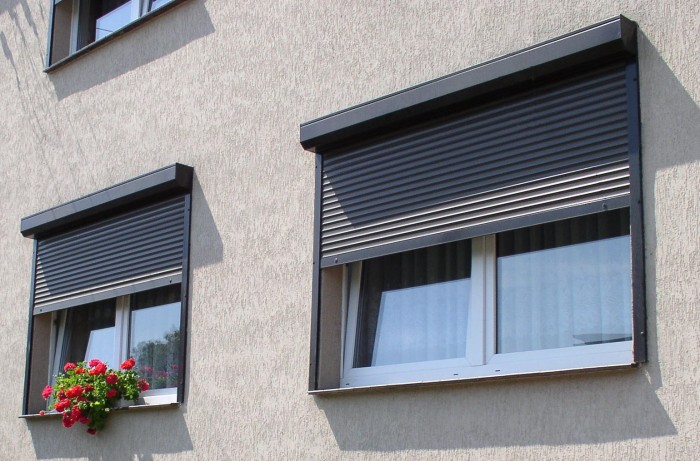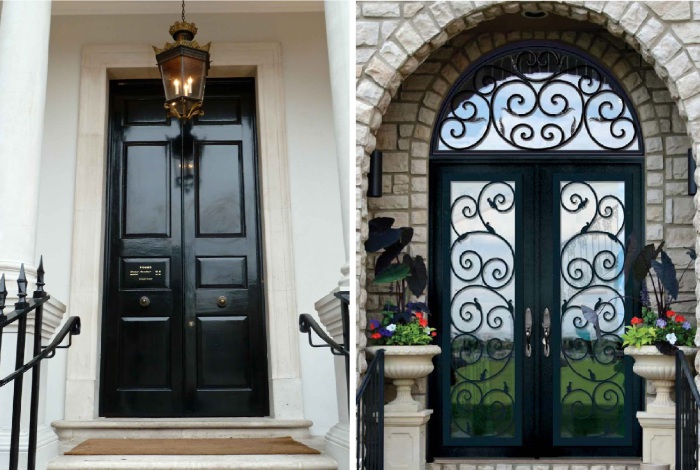Peephole for the door: 10 tips for choosing a peephole
Peephole is a guarantee of home security and protection from uninvited guests. It is hard to believe that even some 50-60 years ago, people could do without this small but very important invention. Today, the peephole seems to be an ordinary thing, and so much so that many do not even know that there are a lot of types of door peepholes that differ in the material of execution, viewing angle, degree of stealth, and other parameters. There are even video eyes that can provide the maximum level of security and control over the space near the front door. We figure out how to choose the door peephole and what parameters it is important to pay attention to, and also learn how to install the peephole correctly.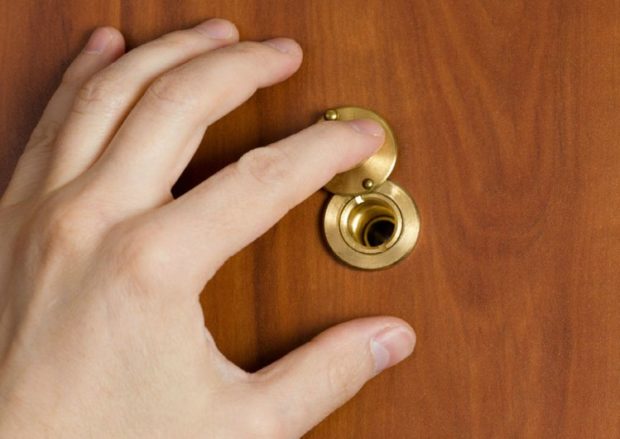
No. 1. Door Eye Design
Today, the peephole is an attribute of almost every front door in the world. It became widespread only in the 1960s, and the basis of its design lay wide angle lens, also called the fisheye, which was invented by Robert Wood in 1906. An American scientist, inventor and writer managed to create a lot of useful things, but this invention did not find practical application. His idea was somewhat ahead of time. Thanks to the wide-angle lens, not only the capabilities of photography and video have expanded, but also a chance to increase personal safety. Now what is happening on the back of the front door is easy to see. Any suspicious person, a dangerous situation or just an uninvited guest will be noticed on time.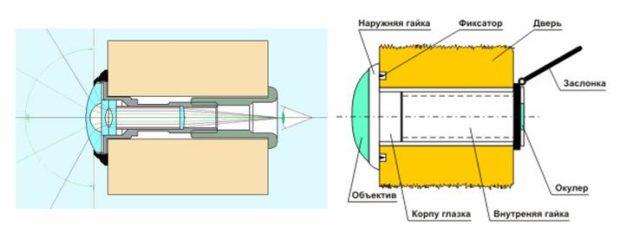
The variety of peepholes for the door is huge today, but most of them have the same construction. On the outside and inside of the eye there are lenses - the lens and the eyepiece. The lens is held by an external nut, which is fixed with special locks on the door. Behind the outer nut are the eye housing and inner nut, which are hidden in the door leaf. On the inside, the eyepiece may be further provided with a shutter. Additional lenses may be used inside the eye. In total, there are usually from 2 to 15. In addition to lenses, a periscope eye uses a system of mirrors.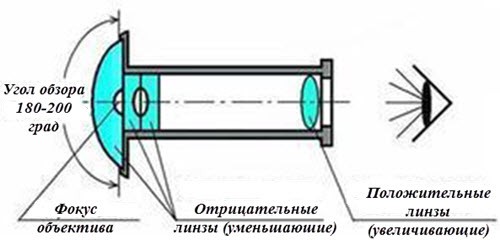
No. 2. Eye angle
The minimum viewing angle that is found in modern eyes is 120 degrees. Common sense suggests that this may not be enough, because control over some areas of the space behind the door is lost, where attackers can hide. That's why it is recommended to take a peephole with a viewing angle of 180 degrees.
Some manufacturers produce eyes with a stated viewing angle of more than 200 degrees. Such a lens allows you to capture even more information, remove distortions and transmit to a person a picture with the same viewing angle of 180 degrees, but more understandable and natural.
There is one more trick. If you move the focus of the lens forward, you can get a wider viewing angle. Such eyes will be a great helper in every home.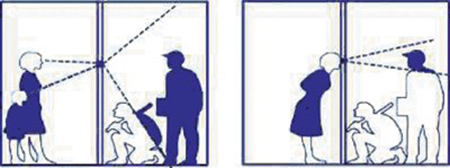
No. 3. Eye length
The length of the door eye depends on the thickness of the door leaf. Everything is simple and logical. The length of the eyes are of the following types:
- standard. Fit for doors 30-55 mm thick, and there are most of them in the domestic space. Wooden and metal entrance doors make just this thickness, so standard eyes have gained the greatest popularity. Each eye is supplied with a thread, thanks to which its length can be adjusted so that it exactly matches the thickness of the canvas;
- elongated, for doors 55-100 mm thick. Such eyes are used in cases where the door leaf insulated from the outside and inside, and the length of the standard eye is not enough;
- a long, for doors more than 100 mm thick. Usually made so massive armored doors.
Please note that the optics in long and elongated eyes should differ from that used in standard ones, otherwise the viewing angle will be significantly lower than it should be, and the visibility of objects in the field of view will suffer.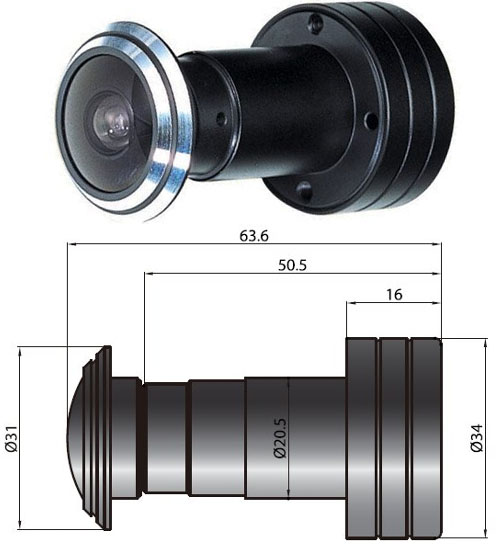
Number 4. Eyelet material
Eye lenses are responsible for how high-quality image you will see, by analogy with the lenses in the camera lens. The lenses in the eye can be made of the following materials:
- plastic. The cheapest, but at the same time the most short-lived option. Initially, such an eye will serve normally, but after 2-3 years the lenses will begin to cloud and distort the image. If you add the property of plastic to attract dust, then you do not want to recommend such an eye for purchase, even considering its attractive cost;
- ordinary glass devoid of all the problems characteristic of a plastic counterpart. Such eyes are durable, do not become cloudy over time, do not lose image clarity. Their minus is not so much in price as in increased fragility;
- optics - perfect option. Such a peephole will be durable and will not lose useful performance over the entire service life. In addition, eyeglass optics are not as fragile as glass. The only negative is the cost, but such investments will more than pay off.

The body of the eye can be made of metal or plastic. It is easy to understand which of these materials is more durable and which is more expensive. The metal peephole well tolerates external influences and temperature extremes. In this regard, plastic is inferior to metal and can crack even under the influence of a sharp temperature drop, therefore, for entrance doors to a private house such a peephole is definitely not suitable, but in apartment buildings it can be safely used.
As for the color of the case, then there is a wide variety. Manufacturers paint products under brass, chrome steel, bronze, silver and even gold. The choice depends on the characteristics of the exterior door leaf and personal preferences.
No. 5. Door Eye Diameter
Anyone who knows even the basics of photo-making remembers that the quality of pictures, especially in the dark, depends on the magnitude of the aperture opening, which transmits light to the matrix. With eyes, everything is about the same. The larger the diameter of the eye lens, the higher its aperture, and the easier it will be to consider everything that happens outside the door. Eyes with a large diameter allow you to observe the landing, being at a distance of 5-7 cm from the door.
If the door already has a hole for the eye, be very careful about choosing a diameter. When buying a peephole with a slightly larger diameter, it will be possible to increase the hole, but otherwise it is not so simple.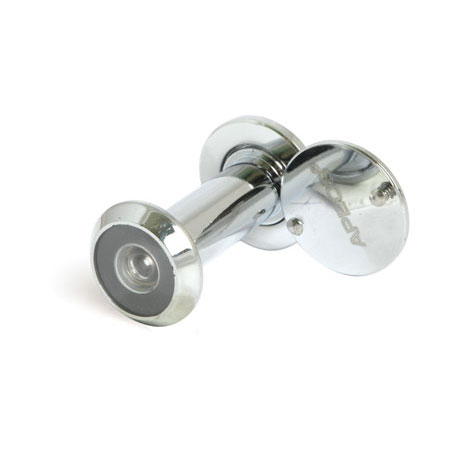
No. 6. Eye catch and its analogues
The gate valve has become an integral accessory of the door lock. Two functions are assigned to it at once. Firstly, thanks to her from the outside it is impossible to consider whether there is someone inside the apartment. Secondly, this eye looks purely aesthetically better, and the rays of light from the outside will not break through.
The most modern eyes instead of the usual mechanical valves receive a mirror coating. They have the same functionality, but the image is slightly less bright than when using conventional lenses without spraying.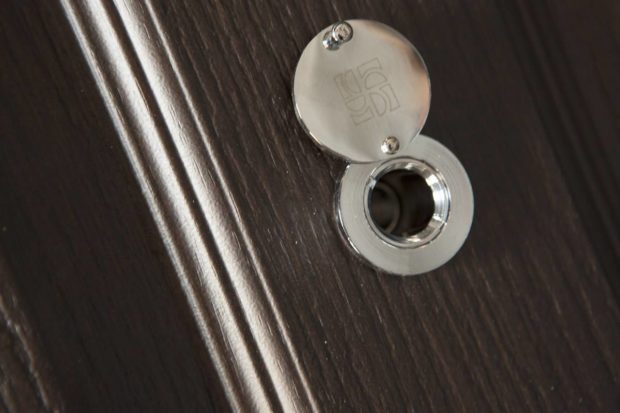
Number 7. The main types of door locks
That peephole, which gives a viewing angle of 180 degrees and has no more distinctive features, is called standard. This is a good solution for residents of decent high-rise buildings, but if the sense of security is heightened, the area is criminal or you just want to have maximum control over your home and what is happening outside, you can pay attention to more functional types of door eyes:
- panoramic peephole differs by the presence of a lens divided into two lenses. Due to this, it turns out to collect more light and transmit a panoramic image to the eyepiece. All corners near-door space They will be perfectly visible, and you can see the image, even if you do not come close to the eye;
- bulletproof eye provides households with an increased level of security. Complete with a powerful door and a pair complex locks such a peephole will protect the house from any encroachment by intruders. Such a peephole will be especially relevant if the front door goes out;
- secret peephole mounted not in the center of the canvas, but in the most unexpected place, for example, in a doorbell, apartment number or a nail. It can be standard, panoramic or equipped with a camera. In the latter case, monitoring the landing is much easier;
- peephole for double door consists of two parts and allows you to view the space in front of the outer door without opening the inside;
- periscope eye different arrangement of the lens and eyepiece at different levels. To transmit the image from the lens, a system of mirrors is used. This type of eyes is convenient if there are children and people with disabilities in the house;
- peephole for the door - This is actually a miniature surveillance camera that allows you to broadcast the image to a computer monitor, TV or smartphone, take photos and record videos.
The latter species is so strikingly different from those eyes that we used to see, which requires a more detailed examination.
Number 8. Video peephole for the front door
Following the smart locks appeared and smart eyeswho can shoot what they see and transmit information to an external device. You probably should not even talk about amenities - they are there. You can always know what is happening or was happening in front of your door.
Video peephole is a whole range of equipment that includes a camera, power supply, cable and monitor. The heart of this system is microscope camera, which is often designed in such a way as to resemble the ordinary peephole as much as possible. Outwardly, the differences are minimal, so the likelihood that someone intentionally damages the eye is small. From the camera, the received information is transmitted to the monitor. It could be tv screen, computer, smartphone or your own small screen, combined with the eye. Today, many devices transmit information wirelessly (over the network Wi-Fi), so if someone rings the doorbell while you are sitting at the computer, you just have to expand the window of the special application and see who came. The most advanced models can transfer images to a smartphone, even if you are not in the apartment.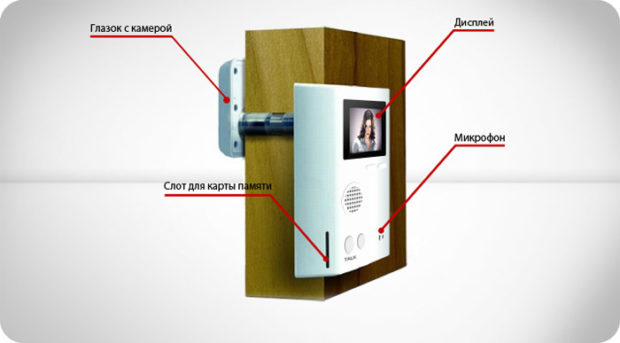
There are eyes where a small screen is located behind the lens and mounted on the door. Just click on the button to see what happens beyond the threshold. Connecting such eyes is not more difficult than ordinary ones. Some call this kind of video eyes electronic eyes for doors.
Video peephole for the front door has many advantages:
- wide viewing angle (full 180 degrees);
- the presence of an infrared sensor and high sensitivity of the camera allows you to see what is happening in front of the door, even in low light conditions;
- it is impossible to disconnect such an eye from the outside;
- video eyes with a motion sensor start recording as soon as someone appears on the landing.In the future, such records may be very much needed;
- video eyes with a bell mounted in them take a photo every time they ring the doorbell. You will be able to see a full report of all visitors who came while you were not at home;
- some eyes can serve as an intercom or answering machine;
- the ability to transfer video and photos to a smartphone, recording to a memory card.

When buying, be sure to pay attention to the viewing angle, the dimensions of the device and type of food. The device may be wired or battery powered. For the latter, it is important to make sure that the batteries are convenient to change if something happens. It is also necessary to clarify the time of their work. The clarity of the image largely depends on the resolution of the camera, so it’s better to take video eyes with a camera resolution of at least 1.5-2 MP. Try to take a peephole with the highest photosensitivity so that he can "see" well in the dark. In the specifications, the aperture value may indicate this parameter: the smaller the better.
Some video eyes are additionally equipped with an ordinary eye, which can also be useful in some cases.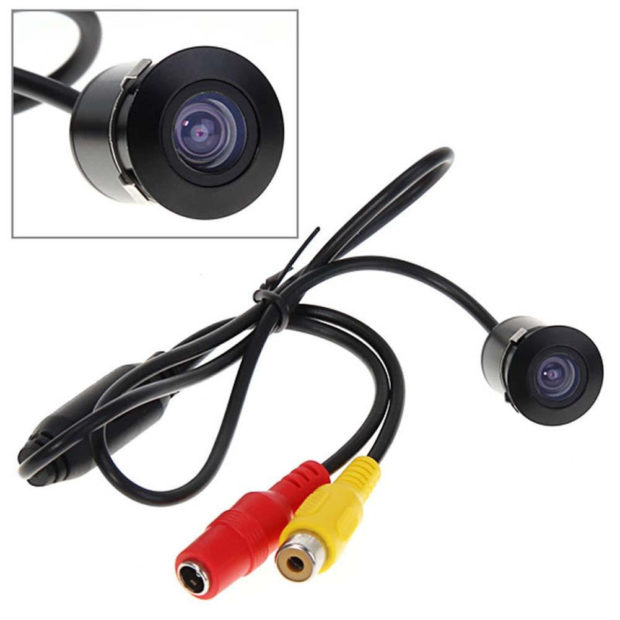
No. 9. Door Eye Manufacturers
The market presents products of numerous brands. This is the rare case when it is difficult to single out obvious leaders - you will have to personally inspect the product and study all the characteristics. Nevertheless, some of the largest manufacturers can be distinguished. Among foreign ones:
- ABUS, Germany. The company specializes in the manufacture of locking mechanisms, security systems and eyelets. Products are of the highest quality, but also cost accordingly;
- Armadillo, China produces eyes with glass and plastic lenses in a metal case in different colors. Models of various widths are also presented, so finding a suitable option will not be difficult.
Among domestic companies can be identified:
- NORA-M produces a wide range of door hardware. The eyes have glass and plastic lenses, a body made of brass and an alloy of zinc, aluminum and copper (TsAM), a viewing angle of 180-200 degrees, distortion is minimal. Great choice for the money;
- DOORLOCK for over 20 years in the market of door hardware. It produces eyes from various alloys; prices are more than favorable;
- Apecs produces eyes with plastic lenses in brass, plastic and aluminum housing. The main advantage is reasonable prices.

No. 10. Installation of a door peephole
Installing a regular peephole is a matter of minutes. No special skills are required. The procedure is as follows:
- choosing a suitable place on the door and marking;
- drilling holes on both sides of the door. Can use drill or hammer drill. The diameter of the hole is selected depending on the size of the eye;
- installation of a tip with a lens on the outside of the door; on the inside, it is tightly screwed on with an eyepiece.
That, in fact, is all the work. If you choose a video peephole that has its own screen mounted on the inside of the door, the installation process will not be much more complicated. When it comes to video eyes that will transfer the image via cable to a TV or computer, it is better to entrust the installation to professionals who know exactly how to properly configure the signal.
If you responsibly approach the selection and installation of the eye, you can always keep control of your own home.

